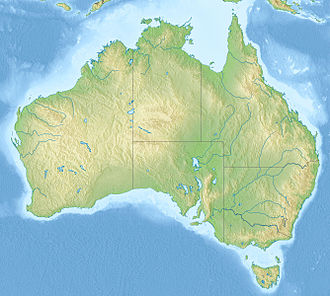| Lake Barrine (Barany) | |
|---|---|
 View from a cruise | |
| Location | Lake Barrine, Queensland |
| Coordinates | 17°15′00″S145°38′00″E / 17.2500°S 145.6333°E |
| Type | Crater lake |
| Primary inflows | precipitation |
| Basin countries | Australia |
| Max. width | 1,230 m (4,040 ft) |
| Average depth | 35 m (115 ft) |
| Max. depth | 65 m (213 ft) |
| Shore length1 | 4.5 km (2.8 mi) |
| Surface elevation | 730 m (2,400 ft) |
| 1 Shore length is not a well-defined measure. | |
Lake Barrine is a freshwater lake on the eastern parts of Atherton Tableland in the locality of Lake Barrine, in the Tablelands Region of Far North Queensland, Australia, [1] close to Lake Eacham. The lake and surrounds are protected within the Crater Lakes National Park and are accessible via the Gillies Highway. [2]



